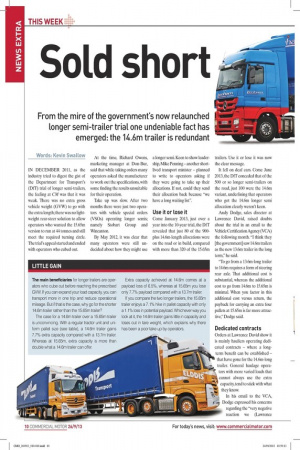LITTLE GAIN
Page 8

If you've noticed an error in this article please click here to report it so we can fix it.
The main beneficiaries for longer trailers are operators who cube out before reaching the prescribed GVW. If you can expand your load capacity, you can transport more in one trip and reduce operational mileage. But if that is the case, why go for the shorter 14.6m trailer rather than the 15.65m trailer?
The case for a 14.6m trailer over a 15.65m trailer is unconvincing. With a regular tractor unit and uniform pallet size (see table), a 14.6m trailer gains 7.7% extra capacity compared with a 13.7m trailer. Whereas at 15.65m, extra capacity is more than double what a 14.6m trailer can offer.
Extra capacity achieved at 14.6m comes at a payload loss of 6.5%, whereas at 15.65m you lose only 7.7% payload compared with a 13.7m trailer.
If you compare the two longer trailers, the 15.65m trailer enjoys a 7.1% hike in pallet capacity with only a 1.1% loss in potential payload. Whichever way you look at it, the 14.6m trailer gains little in capacity and loses out in tare weight, which explains why there has been a poor take up by operators.







































